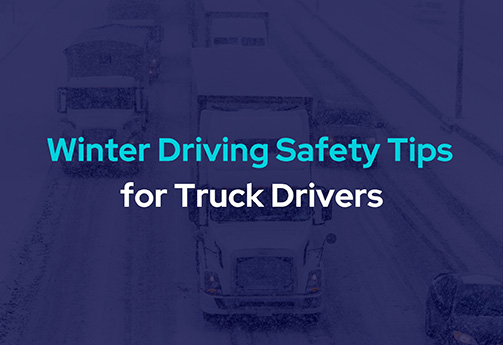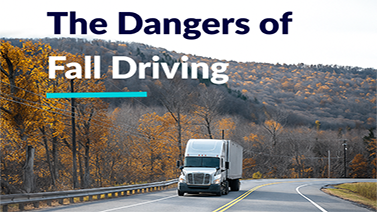Winter driving safety tips for truck drivers

Winter Storm Blair is sweeping across the U.S., bringing snow, ice, and frigid temperatures to regions unaccustomed to such conditions. Professional truck drivers face increased risks during these storms, including black ice, low visibility, and equipment failures. Here are essential tips to help you navigate safely through this storm and others like it.
Think like a pilot: Know the storm’s impact on your route
Over the past week, there have been several severe impacts from winter storms.
- Kansas Ice Storm: Just days ago, I-70 in Kansas was shut down due to ice, leaving drivers stranded and causing multiple accidents. It is reasonable to expect similar icy conditions across the Midwest.
- Southern States Black Ice: Texas and other southern regions are experiencing black ice, which can be nearly invisible but extremely dangerous.
- Northeast Blizzard Conditions: Reduced visibility and heavy snow are causing major hazards along I-95 and other key routes.
What to do:
- Pre-plan your trip and route before leaving. Use reliable weather apps like NOAA or AccuWeather to monitor real-time road conditions.
- Communicate with dispatch to reroute or adjust schedules if conditions worsen.
- Be prepared for emergencies with blankets, gloves, non-perishable food, water, flashlights, batteries, and tire chains. Keeping a shovel, extra windshield washer fluid, and a fully charged phone can also be handy.
Recognize black ice and react properly
How to identify black ice:
- Roads appear wet but emit no spray from tires.
- Mirrors or truck antennas develop a thin layer of ice, which indicates that the air temperature is below freezing.
- 34 degrees Fahrenheit is the tipping point when wet roads freeze. Keep an eye on the outside temperature and make plans to stop proactively.
Driving on black ice:
- If you are stuck in a situation where you drive on black ice, do not brake suddenly. Ease off the accelerator and steer gently.
- Reduce your speed significantly and maintain a longer following distance.
- Find a safe place to stop your truck until conditions improve.
Adjust your driving techniques
Sudden movements are one of the leading causes of accidents in icy conditions:
- Slow down. Speed limits are set for ideal conditions, not for snow or ice. Reduce your speed by at least 25%-30%.
- Increase your following distance to leave at least 8-10 seconds between you and the vehicle ahead.
- Use your engine brake cautiously. Hard braking can cause a skid or jackknife.
Know your limits and when to stop
As a professional truck driver, deciding when to stop during severe weather is critical–not just for your safety but for the safety of others on the road. Under the Federal Motor Carrier Safety Administration’s (FMCSA) General Duty Clause (49 CFR 390.3(e)), all drivers must operate their vehicles safely and make decisions that prioritize safety above all else. The weather conditions are widely known and forecasted for winter storms like this. This means you should:
- Review weather reports, identify potential hazards, and coordinate with dispatch before starting your trip.
- If conditions become unsafe–such as loss of traction, equipment issues, low visibility, roads starting to freeze, or fatigue–pull over to a safe location.
- Keep your fleet manager updated about delays or safety-related stops.
Best practices for stopping safely:
- Use safe locations, like rest areas, truck stops, or parking lots. Avoid shoulders unless absolutely necessary.
- Use emergency triangles, cones, and flashers to alert others if you must stop on a shoulder.
- Check weather updates and inspect your truck before continuing.
Prevent mechanical failures
Cold weather can cause critical issues for your truck:
- Low tire pressure can reduce traction. Ensure proper inflation and adequate tread depth.
- Prevent fuel gelling by keeping tanks above half-full and using additives as needed.
- Visibility is critical. Make sure your lights are free of snow and ice, replace worn wiper blades, and fill up windshield washer fluid.
Key reminder: When in doubt, stop
No deadline is worth your life. If in doubt, stop and wait for conditions to improve. By planning, adjusting your driving, and prioritizing safety, you can reduce risks and ensure a safe arrival.


